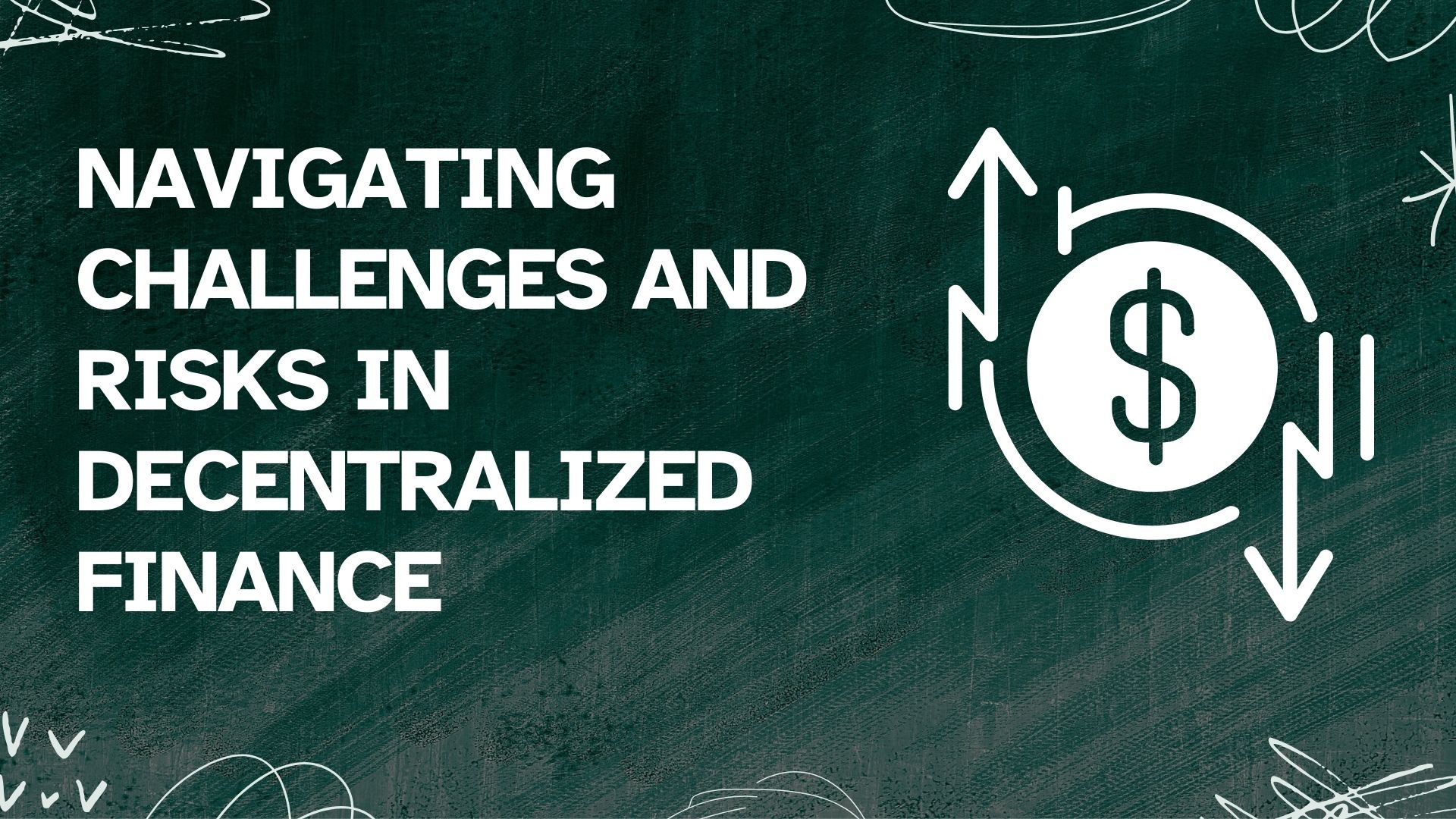
Decentralized Finance (DeFi) has emerged as a disruptive force in the financial world, promising to revolutionize traditional finance through blockchain technology and decentralized systems. While the potential benefits of DeFi are significant, it is essential to navigate the challenges and risks inherent in this rapidly evolving landscape. In this comprehensive exploration, we delve into the key hurdles faced by the DeFi ecosystem and strategies to mitigate risks for sustainable growth and adoption.
The Foundation: Understanding Decentralized Finance
Defining DeFi
Decentralized Finance refers to the use of blockchain and cryptocurrency technologies to recreate traditional financial services without the need for centralized authorities. Smart contracts, which are self-executing contracts with terms directly written into code, form the backbone of DeFi, enabling automated and transparent financial processes.
Key Principles of DeFi
- Decentralization: DeFi operates on decentralized networks, reducing dependence on traditional financial intermediaries like banks. This enhances transparency, reduces the risk of manipulation, and fosters financial inclusion.
- Interoperability: DeFi platforms are designed to be interoperable, allowing seamless interaction between different protocols. This interoperability enables users to access a variety of financial services across various DeFi projects.
- Permissionless Access: DeFi offers permissionless access, allowing individuals to participate without traditional identification processes. This promotes financial inclusion by removing barriers to entry.
- Smart Contracts: DeFi relies heavily on smart contracts to automate and enforce financial agreements. While smart contracts enhance efficiency, they also introduce complexities and potential vulnerabilities.
The Hurdles: Challenges in Decentralized Finance
1. Smart Contract Risks
Smart contracts are fundamental to DeFi, facilitating automated and trustless financial transactions. However, the complexity of these contracts and the lack of standardized security practices can lead to vulnerabilities. Coding errors or unforeseen exploits in smart contracts can result in significant financial losses for users. The decentralized nature of DeFi often means that once deployed, correcting these vulnerabilities can be challenging.
2. Security Concerns
Security is a paramount concern in the DeFi space. The decentralized and open nature of blockchain networks makes DeFi platforms susceptible to hacking attempts, security breaches, and vulnerabilities. Users entrust their assets to these platforms, emphasizing the critical need for robust security measures. Regular security audits, bug bounty programs, and collaborations with cybersecurity experts are essential for maintaining user trust and the overall stability of the DeFi ecosystem.
3. Regulatory Uncertainties
DeFi operates in a regulatory gray area in many jurisdictions. The absence of clear regulatory frameworks poses challenges for the industry. Regulatory uncertainties can impact user protection, investor confidence, and institutional adoption. As governments around the world grapple with how to categorize and regulate decentralized finance, navigating these uncertainties becomes a delicate balancing act for DeFi projects.
4. Market Volatility
The cryptocurrency market, where many DeFi assets reside, is renowned for its inherent volatility. While volatility can present opportunities for significant gains, it also introduces substantial risks. Users engaged in DeFi activities may experience sudden and unpredictable value fluctuations in their assets. Effective risk management strategies and a thorough understanding of market dynamics are essential for users navigating the volatile DeFi landscape.
5. Liquidity Risks
DeFi platforms heavily rely on liquidity provided by users. Sudden and unexpected shifts in market sentiment or large-scale withdrawals can impact liquidity, leading to slippage and increased risks for users. Ensuring sufficient liquidity and implementing mechanisms to handle sudden changes in demand are crucial for maintaining a stable and efficient DeFi ecosystem.
Strategies for Mitigating Risks in Decentralized Finance
1. Code Audits and Formal Verification
To address smart contract risks, DeFi projects should undergo thorough code audits by reputable firms specializing in blockchain security. These audits can identify vulnerabilities and ensure that the code is robust and secure. Additionally, employing formal verification methods can help mathematically prove the correctness and security of smart contract code, minimizing the likelihood of vulnerabilities.
2. Robust Security Measures
DeFi platforms must prioritize security from the design phase onwards. Implementing encryption, multi-signature wallets, and secure key management practices are crucial measures. Regular security audits, penetration testing, and the use of the latest cybersecurity technologies can help identify and address potential weaknesses.
3. Engagement with Regulatory Authorities
While regulatory uncertainties persist, proactive engagement with regulatory authorities can foster understanding and collaboration. DeFi projects should stay informed about evolving regulatory landscapes and be prepared to adapt their structures and practices to comply with emerging regulations. Collaborating with regulators can contribute to a more favorable regulatory environment for the industry.
4. Diversification and Risk Hedging
Users engaging in DeFi activities should adopt a diversified portfolio strategy to mitigate market volatility risks. Diversification across various assets and platforms can help spread risk. Additionally, employing risk hedging strategies, such as utilizing stablecoins during periods of high volatility, can contribute to more resilient DeFi participation.
5. Dynamic Liquidity Management
DeFi platforms should implement dynamic liquidity management strategies to adapt to changing market conditions. Automated market-making algorithms and incentives for liquidity providers can enhance liquidity resilience. Continuous monitoring and stress testing are essential to identify potential liquidity risks and proactively address them.
The Road Ahead: Building a Resilient DeFi Ecosystem
As decentralized finance continues to evolve, addressing challenges and mitigating risks is imperative for sustainable growth and mainstream adoption. The industry must collectively work towards enhancing security practices, fostering regulatory clarity, and implementing mechanisms to navigate the dynamic nature of the cryptocurrency market.
Users, developers, and regulatory bodies play pivotal roles in shaping the future trajectory of DeFi. By embracing a proactive and collaborative approach, the decentralized finance ecosystem can navigate challenges, build resilience, and unlock its full potential as a transformative force in the global financial landscape. Balancing innovation with security and regulatory compliance will be key to ensuring the long-term success of decentralized finance.




